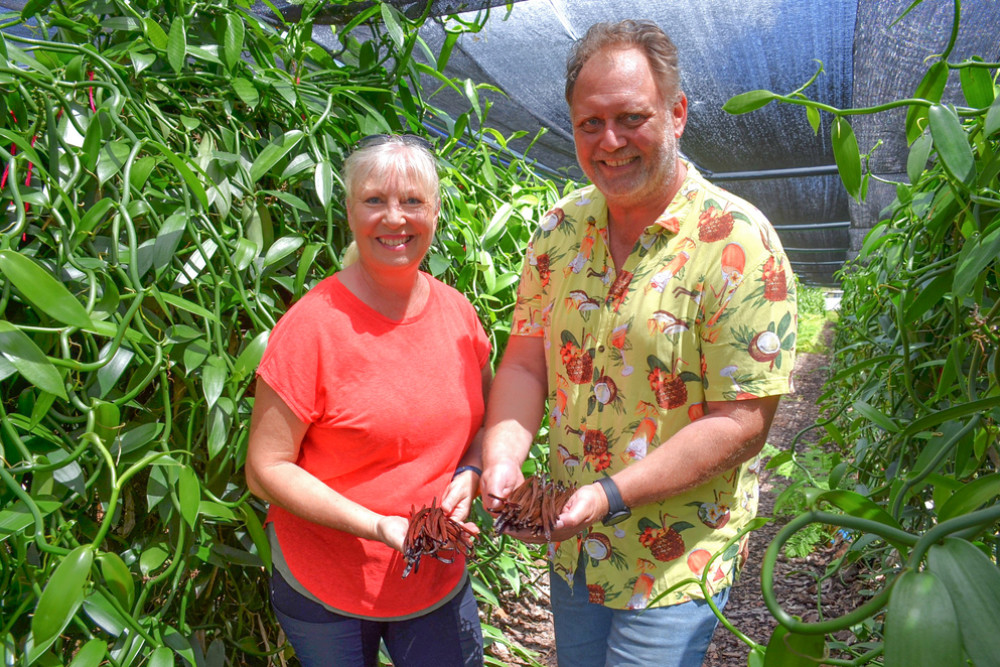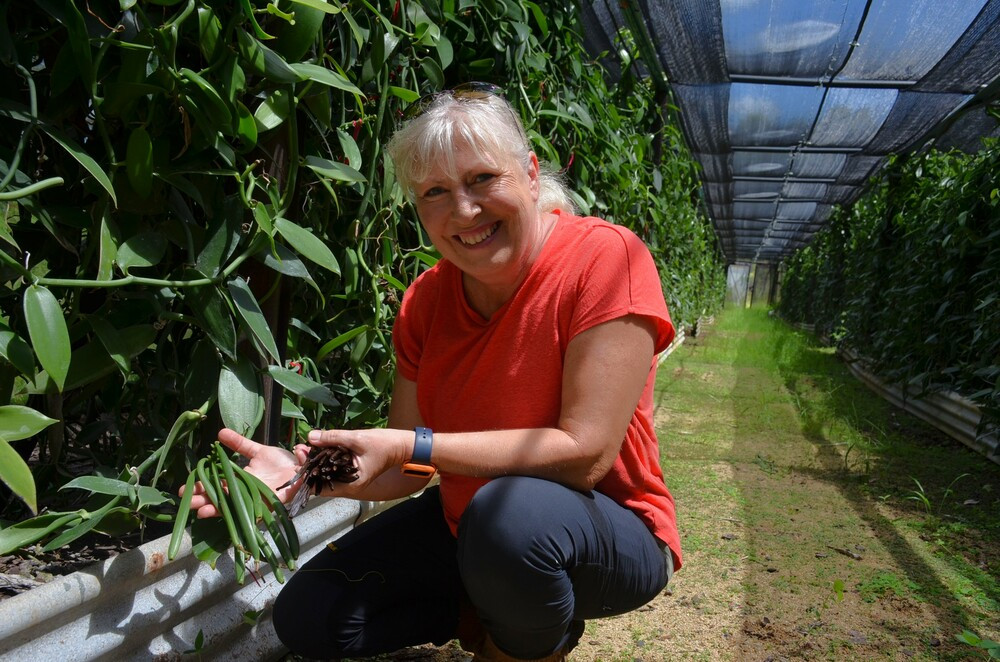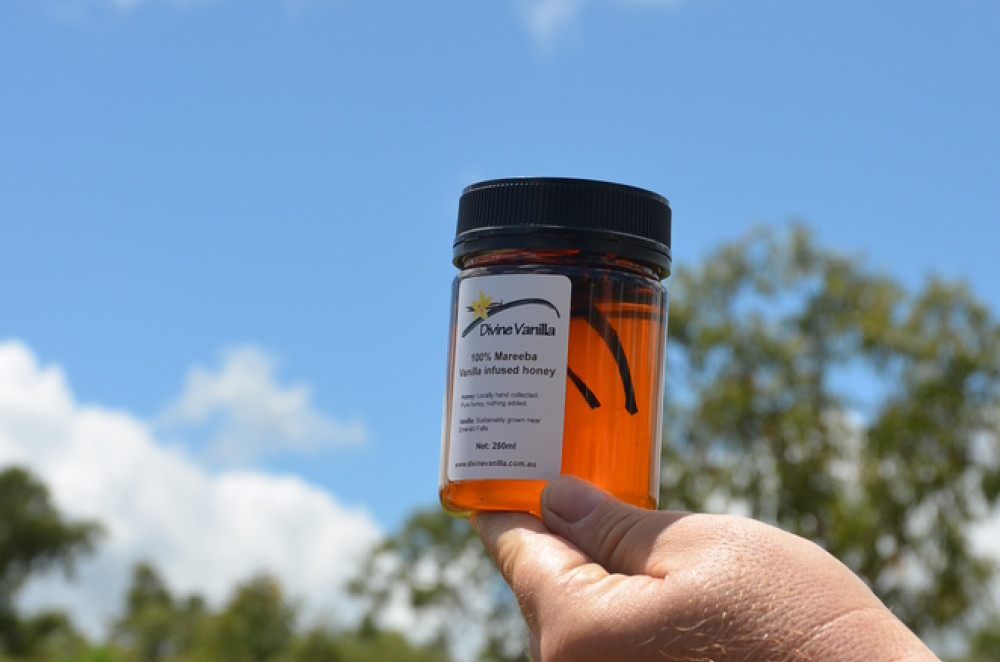General News
2 April, 2023
The divine scent of vanilla
THE hot, harsh conditions of the Northern Tablelands make growing a delicate product like vanilla a difficult process however Per and Lene Andersen stood up to the challenge a few years ago and are doing just that with their small boutique vanilla farm nestled on the outskirts of Mareeba.

A fateful meeting when purchasing a hat was one of the key drivers that pushed the couple to consider growing vanilla.
In 2017, they planted their first vanilla crop which proved to be an interesting venture as it is usually grown in rainforests and coastal areas.
As the plant needs to be shaded, a shade house was constructed, and the vines are watered four times a week.
The Andersons now have 1000 vanilla vines that produce roughly 50,000 beans – 50 beans per plant – and sell them through their business, Divine Vanilla.
“It is not a difficult plant to grow they have been really generous, we just put them in the ground, created the environment for them and they just took off,” Lene said.
While growing vanilla may not be difficult, it is a lengthy drawn-out process as the plant takes roughly three to four years to start producing a good amount of vanilla and can take up to 14 to 16 months to be harvest ready.
Some of the stages of growing overlap and farmers often find themselves drying out one batch of vanilla while preparing for next season.
Pollinating the vanilla is especially tedious as each plant must be individually hand pollinated with a toothpick.
“For a period of six to eight weeks you have got to be out there every morning between 7am and 12pm as each flower only opens once a day,” Per said.
“You have a five-hour window to go out and pollinate otherwise you lose the chance of actu-ally getting a bean out of the flower.”
After the long pollinating process, nine months later around June, the beans are ready to be har-vested.
However not all beans are ready at the same time and the Andersons check the plants each week to see which ones are ready to be harvested.

Per classifies the beans into A, B and C grade with the only difference separating A and B grade being the length, while C grade is mainly used by distilleries and other similar businesses.
When the beans are picked they are still green don’t possess the trademark aroma, the beans must be dried out properly and correctly before they can be used properly.
“It is a very basic process but again time consuming,” Per said.
“First you have the killing process where you “kill” the bean as you call it, which prevents it from ripening anymore basically.
“After that you’ve got to keep them warmish during the day and then you can put them out on shelves to dry.
“Every second day you go out to check if they are dry enough to be put away.”
Drying the beans out properly can take anywhere from a few weeks to a few months. The beans are then put away in an air-tight container where they remain for three months before they are finally ready.
Divine Vanilla sells their product online but also wholesale to restaurants to be used in cook-ing and distilleries to be used during the fermentation process.
However, many people buy roughly 100g of vanilla to use for their own home cooking which would cost them roughly $80 for B grade beans and $100 for A grade.
The Andersons use many of their C grade beans to make different products including vanilla honey, diffusers and more.
If you would like to look through Divine Vanilla’s selection of different vanilla scented and flavoured products head to www.divinevanilla.com



